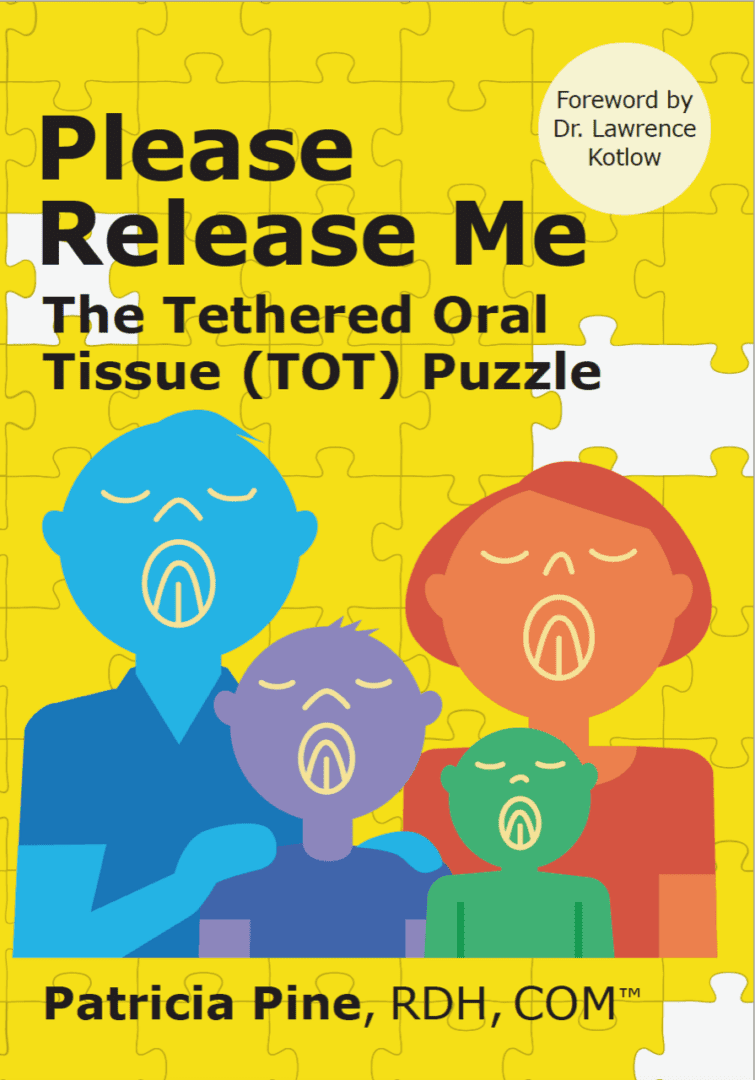For Patients and Families
Many people use a CPAP machine to help them breathe better at night. While it can relieve symptoms of sleep apnea, it doesn’t fix the problem — it only manages it. Possibly give the patient a false sense of security.
Myofunctional Therapy takes a different approach. This therapy retrains the muscles of the mouth, tongue, and face to work the way nature intended. The goal is to restore proper breathing, tongue posture, and muscle coordination so your airway can stay open naturally — even while you sleep.
Sometimes the real issue isn’t just snoring or restless nights. It’s the way your airway is shaped or how the muscles around it function. Problems may include:
• A narrow or underdeveloped airway
• Collapsed or constricted pharyngeal arches
• A low or restricted tongue posture
• Poor oral rest habits such as mouth breathing or tongue thrusting
When these issues are corrected through Myofunctional Therapy, patients often breathe, sleep, and even focus better — all without relying on machines.
For Professionals — The Structural Connection
From a clinical perspective, CPAP therapy is an effective management tool for obstructive sleep apnea, but it does not address the etiology of airway compromise. Myofunctional Therapy, however, targets the neuromuscular and structural components that contribute to airway restriction.
Key contributing factors may include:
• Pharyngeal arch development: A constricted or asymmetrical pharyngeal arch can reduce airway space and alter airflow dynamics.
• Airway volume and tongue position: Low or posterior tongue posture can diminish oropharyngeal patency, influencing airway collapse during sleep.
• Craniofacial growth patterns: Oral breathing, restricted nasal airway, and improper oral rest posture influence maxillary and mandibular growth trajectories.
• Neuromuscular tone: Hypotonic or uncoordinated orofacial musculature fails to support airway stability, particularly during sleep.
Through targeted muscle re-education, nasal breathing promotion, and postural correction, Myofunctional Therapy seeks to normalize function, expand airway space, and enhance craniofacial balance — treating the root cause of dysfunction rather than managing symptoms.
1. The Importance of a Healthy Airway – all age groups
The airway—from nose to throat—is vital for breathing, sleep, and overall health. When narrow or collapsed, it can cause mouth breathing, snoring, fatigue mid-day, moodiness, behavior issues and sleep apnea. Healthy airway function depends on muscle tone and tongue posture.
2. Understanding Airway Concerns
Mouth breathing dries tissues, increases infection risk, and affects sleep. Snoring signals airway restriction. Obstructive Sleep Apnea (OSA) occurs when the airway collapses during sleep, reducing oxygen and disrupting rest.
3. CPAP: How It Works — and Its Drawbacks CPAP machines or therapy are NOT a cure. They are a band-aid. We look for the root cause of
Your airway concerns.
CPAP does not prevent cardiovascular events. Despite early hopes, studies have shown that CPAP therapy does not reliably reduce the risk of heart attacks, strokes, or overall cardiovascular death in patients with obstructive sleep apnea, especially if the device is not used consistently. CPAP improves oxygenation and symptoms but does not cure the underlying airway obstruction.
CPAP provides constant pressure to keep the airway open but may cause dryness, air leaks, or discomfort. Not cleaning the device can lead to bacterial or mold growth and infections.
CPAP does not treat root muscle dysfunction. CPAP machines mold/mildew risks. This can affect your health – moisture promotes growth within the tubing, reservoir and must be cleaned regularly.
Mold exposure can cause: Respiratory irritation, coughing, sneezing, congestion. Asthma flare-ups, infections, particularly in people with weakened immune system.
Even cleaning, CPAP machines cannot guarantee a sterile environment. Without proper maintenance mold growth can recur.
Manufacturer Recalls and Safety Notes
Notably, Philips CPAP machines were recalled in 2021 due to issues with the polyester-based foam inside devices that could degrade and release particles or microbes, potentially worsening exposure risk. This highlights the importance of monitoring both mechanical and biological safety in CPAP therapy.
Bottom line: CPAP machines can help manage sleep apnea, but they do not address root causes like airway obstruction and can create microbial growth risks if not cleaned meticulously. Regular maintenance is essential for safe and effective therapy.
4. Myofunctional Therapy: A Natural, Functional Approach
Myofunctional Therapy retrains muscles of the mouth, tongue, and face to support nasal breathing and proper swallowing. It seeks the root cause of airway dysfunction in children and adults, correcting low tongue posture and poor tone.
5. Combining CPAP and Myofunctional Therapy
Together they can reduce CPAP pressure, improve comfort, decrease leaks, and support long-term airway health.
6. Summary
Airway dysfunction affects all ages. CPAP helps mechanically, while Myofunctional Therapy improves function and endurance. Integrated care yields the best results.
A Healthier Way to Breathe
Myofunctional Therapy works at the intersection of structure and function. By supporting healthy muscle tone, nasal breathing, and tongue placement, it can create lasting changes in the airway — helping individuals of all ages achieve deeper, quieter, more restorative sleep.
CPAP: Limitations, Risks, and Important Updates
Continuous Positive Airway Pressure (CPAP) machines are widely prescribed for obstructive sleep apnea (OSA) to keep the airway open during sleep. While CPAP can improve sleep quality and reduce daytime sleepiness, it has important limitations and risks that patients should know.
1. CPAP does not prevent cardiovascular events.
Despite early hopes, studies have shown that CPAP therapy does not reliably reduce the risk of heart attacks, strokes, or overall cardiovascular death in patients with obstructive sleep apnea, especially if the device is not used consistently. CPAP improves oxygenation and symptoms but does not cure the underlying airway obstruction.
2. Philips CPAP recall (2021)
In June 2021, Philips recalled millions of CPAP machines and ventilators due to concerns about potential health risks from degrading sound abatement foam. This foam can release particles or chemicals that may be inhaled or ingested, causing respiratory issues, inflammation, or other health concerns. Patients using affected devices should check the recall list and consult their healthcare provider about next steps.
3. CPAP adherence is a challenge.
Many patients struggle with mask discomfort, claustrophobia, dry mouth, or nasal congestion. Inconsistent use diminishes any potential benefits. Daily cleaning can be a challenge. Many do not take the time to clean the tubing and reservoir. This can cause health issues.
4. CPAP treats symptoms, not root causes.
OSA often stems from structural issues such as small airway size, tongue position, or craniofacial anatomy. CPAP does not address these root causes, so airway obstruction persists once the machine is removed.
5. Other limitations and side effects.
• Skin irritation or pressure sores from the mask
• Nasal dryness, congestion, or bleeding
• Aerophagia (swallowing air) causing bloating
• Noise or inconvenience disrupting sleep partners
Bottom line: CPAP is a valuable tool for symptom management, but it is not a cure and should not be relied upon as a preventive measure for heart attacks, strokes, or long-term cardiovascular health. Addressing the underlying airway issues — through lifestyle changes, oral or myofunctional therapy, or surgery — can provide lasting improvement and safer outcomes.
Patricia Pine, RDH, COM, CSFT, CST
info@musclesinharmony.com | 📞 (480) 442-1590
www.musclesinharmony.com | Instagram: @pat_pine
Research and References
1. Guimarães KC, Drager LF, Genta PR, et al. Effects of oropharyngeal exercises on patients with moderate obstructive sleep apnea syndrome. Am J Respir Crit Care Med.
2009;179(10):962–966.
2. Ieto V, et al. Effects of oropharyngeal exercises on snoring: a randomized trial. Chest.
2015;148(3):683–691.
3. Camacho M, et al. Myofunctional therapy to treat obstructive sleep apnea: a systematic review and meta-analysis. Sleep. 2015;38(5):669–675.
4. Xu H, et al. Combination of myofunctional therapy and CPAP in obstructive sleep apnea

